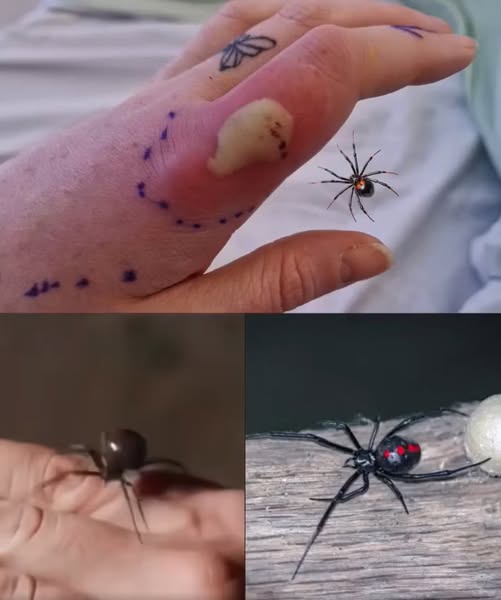Getting bitten by a spider is never a pleasant experience, but when it comes to venomous spiders like the Black Widow or the Brown Recluse, it’s important to know what steps to take immediately to protect your health. In the United States, these two species are among the most medically significant, and while encounters are relatively rare, their bites can lead to serious symptoms if not handled correctly. Knowing how to identify these spiders and what to do in case of a bite could make a crucial difference in how quickly you recover.

The Black Widow spider is one of the most easily recognized spiders due to its shiny black body and distinctive red hourglass shape on the underside of its abdomen. Female Black Widows are particularly known for delivering venomous bites when they feel threatened, especially when guarding their web or egg sacs. Their venom is neurotoxic, which means it affects the nervous system. After a bite, symptoms often develop within 30 to 60 minutes. Victims may experience intense localized pain, muscle cramps, nausea, difficulty breathing, and in some cases, abdominal rigidity that mimics appendicitis. Although rarely fatal, the bite can be especially dangerous for children, the elderly, or those with preexisting health conditions.
In contrast, the Brown Recluse spider is typically light to dark brown and has a distinct violin-shaped marking on its back, with the neck of the “violin” pointing toward the rear of the spider. These spiders prefer dark, undisturbed areas like closets, basements, and woodpiles. Unlike the Black Widow, the Brown Recluse bite is typically painless at first, which can delay recognition. However, within a few hours, the bite may become red, swollen, and blistered. In more severe cases, it can lead to necrosis—tissue death around the bite site—accompanied by fever, chills, and body aches. While fatalities are extremely rare, Brown Recluse bites can cause long-lasting damage if not treated promptly. If you believe you’ve been bitten by a Black Widow spider, the first step is to remain calm. While the symptoms can be severe, most bites are not life-threatening if treated appropriately.
Clean the bite area with soap and water to reduce the risk of infection. Apply a cold compress or ice pack wrapped in a cloth to help reduce swelling and pain. Over-the-counter pain relievers like ibuprofen or acetaminophen can help manage discomfort. However, if symptoms escalate—such as spreading pain, muscle cramping, or difficulty breathing—seek medical attention immediately. Doctors may administer antivenin in severe cases, along with pain relievers and muscle relaxants to ease symptoms. For Brown Recluse bites, cleaning the wound with soap and water is also the first step.
Apply a cool compress but avoid ice directly on the skin. Keep the affected area elevated if possible and try not to move too much, as physical activity can help the venom spread more quickly. It’s important not to apply heat, as it can exacerbate tissue damage. Watch the wound carefully for signs of ulceration or infection. If the area around the bite begins to darken, blister, or develop a crust, or if systemic symptoms like fever or nausea arise, contact a healthcare provider. Antibiotics may be prescribed to prevent secondary infection, and in rare cases, surgical intervention may be needed to remove necrotic tissue. In both types of bites, it’s helpful to catch the spider if it can be done safely and without further risk. Identifying the exact species can assist doctors in choosing the best treatment. However, never put yourself in harm’s way to capture the spider—your safety comes first. Ultimately, prevention is the best medicine. Be cautious when reaching into storage boxes, under furniture, or into dark corners. Wear gloves when working in sheds, garages, or woodpiles. Shake out clothing, towels, or shoes that have been left undisturbed. Regularly vacuuming and dusting can help deter these spiders from settling in. Knowing the signs of a bite and how to respond swiftly and calmly can make all the difference in ensuring a full and speedy recovery.





